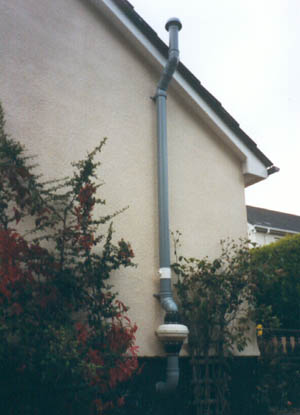

 |
What is radon ?
Radon is a colourless, odourless radioactive gas. It comes from the radioactive decay of radium, which in turn comes from the radioactive decay of uranium which is found in small quantities in all soils and rocks, although the amount varies from place to place. It is particularly prevalent in granite and limestone areas but not exclusively so. Radon levels vary not only between different parts of the country but even between neighbouring buildings.
Radon in the soil and rocks mixes with air and rises to the surface where it is quickly diluted in the atmosphere. Concentrations in the open air are very low. However radon that enters enclosed spaces, such as buildings, can reach relatively high concentrations in some circumstances.
What is the
problem?
When radon decays it forms tiny radioactive particles which may be breathed into the lungs. Radiation from these particles can cause lung cancer which may take many years to develop. In addition, smoking and exposure to radon are known to work together to greatly increase the risk of developing lung cancer.
How
does radon enter a building ?
The floors and walls of
dwellings contain many small cracks and gaps formed during and after
construction. Radon from the ground is drawn into the building through
these cracks and gaps because the atmospheric pressure inside the
building is usually slightly lower than the pressure in the underlying
soil. This small pressure difference is caused by the stack (or
chimney) effect of heat in the building and by the effects of wind.
Where
is radon a problem?
The principal areas of the country in which radon is a problem are the granite areas of Cornwall and Devon, and the limestone areas of Derbyshire, Northamptonshire, North Oxfordshire, Lincolnshire, and Somerset, however there are many other areas in England and Wales affected by radon.
How can you protect against
radon?
A range of practical and cost effective solutions have been developed by BRE to help reduce radon levels in existing buildings and to prevent radon entry into new buildings.
 |
Above; a typically external Radon Sump System.
What we can do for you
Over the years we have successfully carried out work for a number of remedial works for Radon as a result of Mendip District Council’s drive to bring home the dangers of living in a Radon environment.
We are a building company whom are able to carry out all types of remedial work that you may require, as a result of a high Radon level recorded above 200Bq/m3.
We have an experienced technician who is trained to supply and install pressurized or positive pressure systems into your property, which minimal disruption.
Public Health England (PHE) represents a significant nationwide resource for the public, industry, education,research and medicine and is the primary resource for advice about radon in the UK. Radon is a natural radioactive gas, you can't see smell or taste it. In outside air the levels are low but it can accumulate inside buildings. Certain areas of the country are more prone than others.
Useful Link
To order a domestic UKradon pack click HERE
To order a UKradon pack for your work place click HERE
UKradon & British Research Establishment (B.R.E.) HERE
If you
would like to speak to somebody about radon please phone the Radon Hotline
on +44 (0) 1235 822622
For a free quotation Telephone (01305) 777 200
Email: radon@build-craft.com
Images & photographs are for illustration only.
Health & Safety information is
available on request.
Copyright © Buildcraft Construction Ltd. 2010-2018. All rights reserved.